 LOUISIANA DEPARTMENT OF ENVIRONMENTAL QUALITY | Secretary Courtney J. Burdette
LOUISIANA DEPARTMENT OF ENVIRONMENTAL QUALITY | Secretary Courtney J. Burdette
 A DEPARTMENT OF THE STATE OF LOUISIANA
A DEPARTMENT OF THE STATE OF LOUISIANA
Established by Section 303 (a)-(c) of the Clean Water Act, requires EPA to approve state standards and in the absence of approvable state standards, develop and promulgate standards for the state to achieve the “fishable and swimmable” goals of the Clean Water Act. Requires states to hold public hearings at least once every three years for the purpose of reviewing the standards, and as appropriate, revising the standards.
On March 31, 2008, EPA and the U.S. Army Corps of Engineers (the Corps) issued revised regulations governing compensatory mitigation for authorized impacts to wetlands, streams, and other waters of the U.S. under Section 404 of the Clean Water Act. These regulations are designed to improve the effectiveness of compensatory mitigation to replace lost aquatic resource functions and area, expand public participation in compensatory mitigation decision making, and increase the efficiency and predictability of the mitigation project review process.
A voluntary program offering landowners the opportunity to protect, restore, and enhance wetlands on their property. The USDA Natural Resources Conservation Service (NRCS) provides technical and financial support to help landowners with their wetland restoration efforts. The NRCS goal is to achieve the greatest wetland functions and values, along with optimum wildlife habitat, on every acre enrolled in the program. This program offers landowners an opportunity to establish long-term conservation and wildlife practices and protection
Working Lands for Wildlife will assist landowners voluntarily create, restore or enhance gopher tortoise habitat, increasing habitat connectivity, and support potential down-listing of the species. Working Lands for Wildlife will complement the existing Longleaf Pine Initiative by providing targeted funding to help enhance, restore and protect gopher tortoise habitat, and increase landowner confidence that the conservation practices they implement will not harm the species or its habitat. Actions include: Protect, maintain, and restore longleaf pine forests; Increase connectivity of existing gopher tortoise habitat; Improve weed and invasive species management; Promote use of government programs that provide incentives for development or restoration of habitat on private lands.